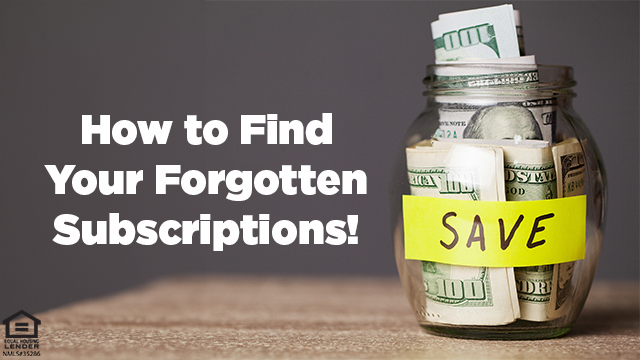
Unsubscribed: How to Track and Cancel Forgotten Subscriptions

Take a moment to think about your recurring payments- everything from streaming platforms, exercise clubs, in-app payments, and subscription boxes. Do you know how many services you’re paying for? Or how much they’re charging you?
The total cost may be more than you’d expect. According to a WMG study, 84% of Americans wildly underestimate how much they’re spending on subscription services. The average person estimated they spent around $75 a month, but in reality, that number was closer to $238 a month, or over $2,800 a year.
Many companies make subscribing so easy that you may not realize what you’ve signed up for before it's too late. Sabrina Miller, our interviewee, has mastered the art of tracking down and managing those subscription costs.
Tackling the App Store
Recurring app subscriptions accounted for $10.6 billion in consumer spending on the App Store in 2017 and grew to $67.5 billion during the first half of 2023. Alongside this substantial growth, a number of developers are taking advantage of paid subscriptions by making it too easy to subscribe. Consumers can be tricked by intentionally confusing app designs, and promises of “free trials” that convert to paid subscriptions after only a matter of days.
“Recurring expenses are often unintended,” Sabrina says. “My kids would sign up for a free trial to learn how to do something and then never think about it ever again. Years later, I was still getting charged $25/month for the service.”
If you do opt for a free trial, make a calendar event to help remind you to cancel it. “Very often, you can cancel as soon as you sign-up, and you’ll still have access for that free trial period,” Sabrina says.
How to Keep Track of In-App Purchases
If you want to keep track of your ongoing app subscriptions, the easiest way to check is through your phone’s settings. While it’s easy to download an app with a free trial followed by a monthly subscription fee and forget that you’re paying for it, it’s not as easy to unsubscribe.
“If something is purchased through the App Store, you are able to see everyone in your family’s subscriptions through just your account,” Sabrina says.
How to Find Your Subscriptions on Your iPhone
- Open the Settings app
- Tap your name at the top above “Apple ID, iCloud+, Media & Purchases”
- Tap on the Subscriptions tab and all of your subscriptions will appear
- If you want to cancel one, tap the subscription and select Cancel Subscription at the bottom in red.
How to Find Your Subscriptions on Your Android
- Open the Settings app and tap “Google,” then “Manage your Google Account.”
- Tap “Payments & subscriptions.”
- Tap “Manage purchases,” “Manage subscriptions,” or “Manage reservations.”
- To see more details, select one of your subscriptions. From there, you can track a delivery, renew, or cancel a subscription.
It’s important to remember that uninstalling an app will not cancel your subscription. You have to cancel the subscription itself to get the charges to stop.
Review Your Bank Statements
You can easily access your bank statements from your online bank portal, and it’s a good idea to check them at least once a month. Consider printing out your statements and going over the charges line-by-line. If you find something you want to cancel, contact the company to get the account closed.
“It’s really good financial hygiene to go through your credit card statements because you wouldn’t ordinarily see them (recurring expenses) if you’re only scanning your bill for high amounts,” Sabrina says.
“Whether it’s real expenses, like the $30 a month I had been paying for the past five years on the Adobe subscription that my kids got for free from school, or small increments of $3.99 that you don’t notice, it adds up to an insane amount.”
Finding Ways to Consistently Monitor Your Recurring Expenses
If you haven’t been keeping an eye on your email for receipts, it’s important to start now. It’s not uncommon for ongoing subscription receipts to appear in your inbox, but they don’t always show up in your primary email folder.
“I signed up for Apple Pay. With them, once you hook your credit card up, you get an alert any time your credit card gets charged,” Sabrina says. “All of a sudden, I was constantly getting alerts for $25-30. It took me a while to realize what was happening, but when I looked at my credit card statements I was like, oh my god.”
“Some subscriptions were easier than others to cancel,” Sabrina says. “It’s worth calling them because, as a courtesy, they might reimburse you for a few months if you haven’t used the service in years.”
Closing Thoughts
When it comes to building a sustainable budget, it’s important to trim the fat. Decide which subscription services are useful, which ones are unnecessary, and most importantly, find the ones that you don’t realize that you’re paying for. Keeping up with your bank statements, email folders, and subscriptions within the App Store will keep your wallet (and your sanity) under control.